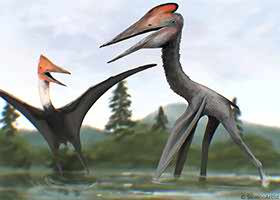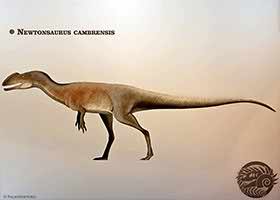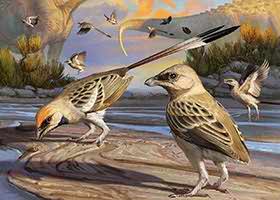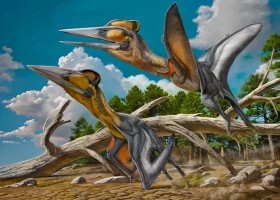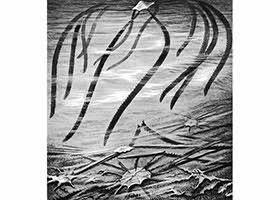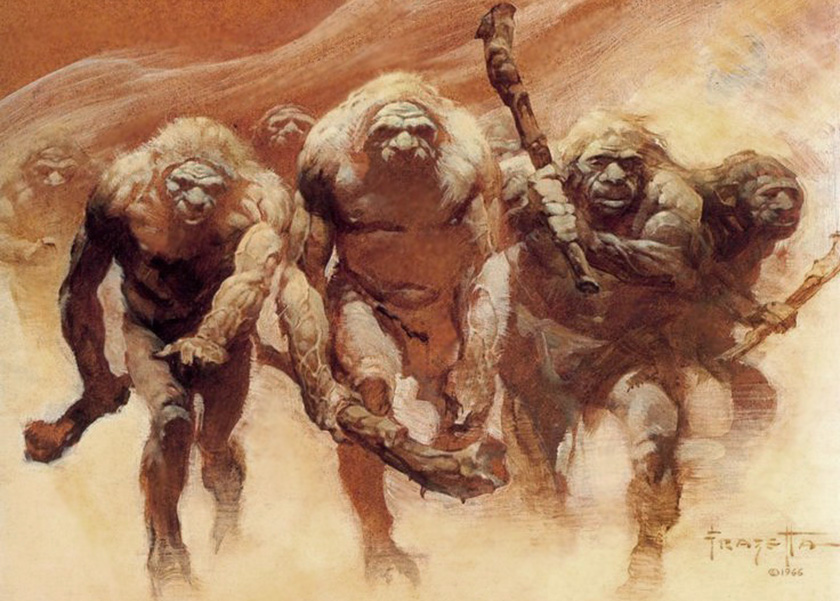
Neanderthal man, or Homo neanderthalensis, is an extinct species of the genus Homo. Between 500,000 and 40,000 years ago, during the Pleistocene epoch, they inhabited Eurasia, predominantly Europe. Neanderthals were robust and powerful hunters, well adapted to surviving in the harsh conditions of the glacial period.
The story of the life and death of Neanderthal man is a narrative of a challenging and perilous existence in the harsh climatic conditions of the glacial period, only occasionally punctuated by brief warming periods. Neanderthals had a short childhood and had to grow up quickly. They grew into strong, courageous hunters adept at crafting Mousterian stone tools, typical of Neanderthal Man. They were compelled to constantly forage for food by hunting, using rather primitive tools, in the vast and mesmerizing periglacial landscapes of Eurasia. This had to be done amidst the struggle and competition with dangerous predators such as lions, hyenas, wolves, and bears. They often suffered severe injuries and faced the threat of hunger. They acquired fire and cared for the weak. However, gradually, negative factors led to a decline in the Neanderthal population and ultimately to their extinction. Our brothers and relatives of the Homo genus vanished from the face of the Earth, leaving behind only traces of their material culture and fossilized bones.

One of the first images of a Neanderthal man, made from a skull from the Feldhofer Grotto (Germany). Schaaffhausen obtained the assistance of a Bonn artist (Clemens Philippart) to have this reconstruction made, representing his best guess at what the Neanderthals looked like. He relied upon the new information obtained from the two recently discovered Neanderthal skulls from Spy in Belgium. This is one of the earliest published artistic portrayals of an extinct hominid. 1888.
+Homo neanderthalensis (Homo sapiens neanderthalensis). King, 1864. Neanderthal man existed in the Middle and Late Pleistocene of Eurasia from 500,000 to 40,000 years ago. The name comes from the place where the first Neanderthal fossil was found, the Feldhofer Cave in the Neander Valley near Düsseldorf, Germany. The valley was named after Joachim Neander, a German pastor and hymn writer. The German word for valley is “Tal” although in the 1800s it was spelled “Thal”.
In fact, this was the third discovery of a Neanderthal skull; the first was made in the Engis Cave in 1829 (Belgium), and the second in Gibraltar in 1848. However, initially, researchers did not recognize them as Neanderthals.
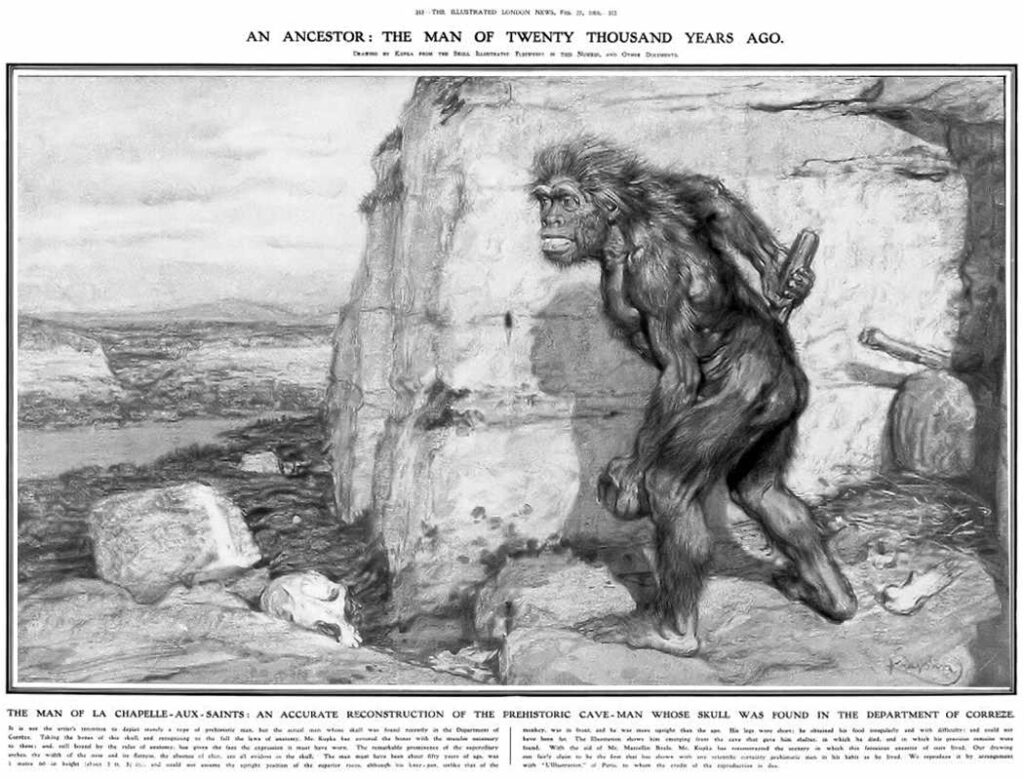
First reconstruction of a Neanderthal man from the La Chapelle-Aux-Saints Neanderthal skeleton discovered in France In 1908. Not knowing that he got the skeleton of a Neanderthal with arthritis, Czech artist Frantisek Kupka made an illustration based on Boulle’s description, where he presented an old Neanderthal man hunched and gorilla-like. 1909. Similar images were printed in textbooks for several decades.
The origin and spread of Neanderthal man
Neanderthals are an extinct species of the genus Homo. The first representatives of the genus were discovered in Europe 1.4–1.2 million years ago. These were Homo erectus or Homo antecessor, whose remains were found in Sima del Elefante, Spain. However, Homo antecessor forms a sister group (a parallel branch) to Neanderthals, Denisovans, and modern Homo sapiens. Scientific evidence suggests that Neanderthals descended from Homo heidelbergensis, which inhabited Europe and Africa around 950–900 thousand years ago (discoveries in Gran Dolina, Spain). Neanderthals are not the ancestors of modern humans, but they are our closest relatives, sharing a common ancestor that originated in Africa.
Neanderthal man originated and evolved specifically in Europe. The first people with proto-Neanderthal features were identified here around 700–350 thousand years ago. The evolutionary branches of modern humans, Neanderthals, and Denisovans diverged approximately 765–750 thousand years ago. Research indicates that Neanderthals were more genetically related to Denisovans than they were to Homo sapiens. The population of the ancestors of Neanderthals and Denisovans that left Africa was very small. Their lineages diverged around 735–731 thousand years ago. The Siberian (Altai) branch of Neanderthals separated from their main group approximately 150 thousand years ago. The oldest fossil remains of Neanderthals are 530 thousand years old. It was previously believed that the last Neanderthals possibly inhabited Gibraltar in Gorham’s Cave around 29 thousand years ago. However, more recent dating indicates that Homo neanderthalensis became extinct around 41–39 thousand years ago.
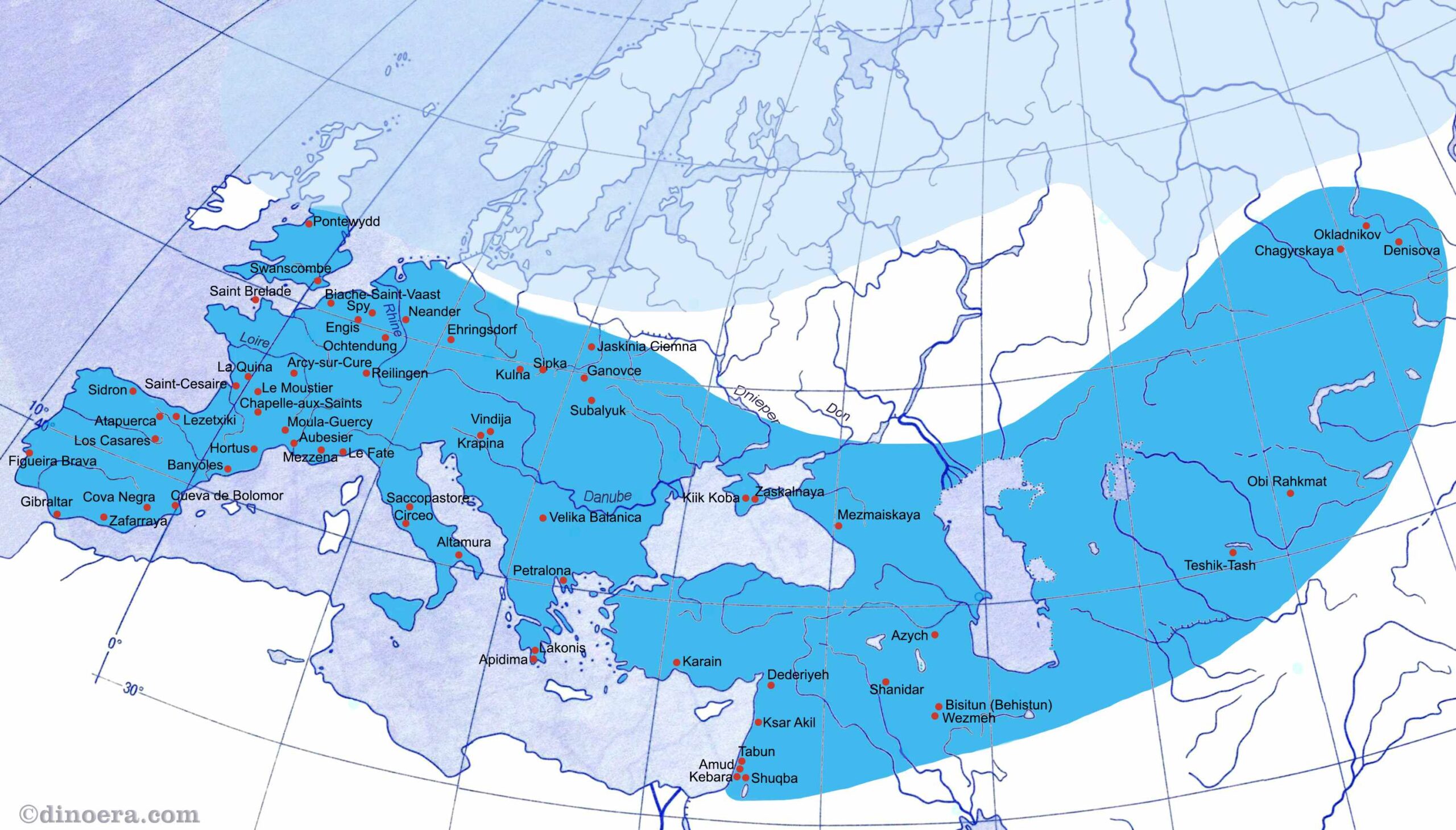
The geographical range of Homo neanderthalensis.
130 thousand years ago, Neanderthals were widely distributed throughout Europe, the islands of the Mediterranean, the Caucasus, the Near East, Central Asia, and the Altai region (including Okladnikov, Chagyrskaya, and Denisova caves). No fossil remains of Neanderthals have been found in Africa. In general, Neanderthals lived in smaller and more isolated groups compared to Cro-Magnons. The maximum estimated population of Neanderthals was up to 100,000 individuals.
Recent genetic studies indicate that Neanderthals made a minimal contribution to the genome of modern humans. Studies suggest that individuals living outside of Africa (Europeans and Asians), have around 2% of their genes inherited from Neanderthals. These genes come from several Neanderthal populations that diverged from other Neanderthal lineages at least 90 thousand years ago. For a long time, these two human lineages coexisted. Neanderthals and modern humans repeatedly replaced each other in the same territory (especially in the Near East). Traces of mutual cannibalism suggest hostility between Neanderthals and Cro-Magnons.
Craniofacial features of Neanderthals

The Neanderthal skull was dolichocephalic, with a cranial capacity ranging from 1400 to 1740 cm³ (averaging 1520–1650 cm³), surpassing that of modern humans (1350 cm³). The brain volume of their newborn children was comparable to that of contemporary humans (400 cm³). Impressions on the internal surface of the cranial vault indicate that their brains were quite human, with no significant differences from the brains of modern humans. Their frontal lobes were not smaller (and the absolute size was even larger) than those of Homo sapiens, and their cognitive abilities were comparable. The sloping foreheads of Neanderthals should not be misleading; this is due to the thickness of the frontal bone, and the inner surface of the skull is the same as that of modern humans.
The lower parietal region of their brain, associated with increased physical labor, was highly developed. Their brain also featured larger temporal lobes, a larger cerebellum, a larger orbitofrontal cortex, and larger olfactory bulbs. Brain anatomy (expanded Broca’s area), vocal apparatus, hyoid bone, as well as genetics (presence of the FOXP2 gene) indicate that Neanderthals had fully articulated speech.
The Neanderthal skull was very low and flattened in the occipital region. It had an elongated form with prominent brow ridges. It featured a specific occipital protrusion (a bulge of the occipital bone), sometimes referred to as a “chignon”. The forehead was strongly sloped, the cheekbones were broad and slanted backward, and the upper jaws lacked the canine fossa characteristic of Cro-Magnons. The labyrinthine bones in the inner ear of Neanderthal man differed even more from those of Homo sapiens than from those of monkeys.
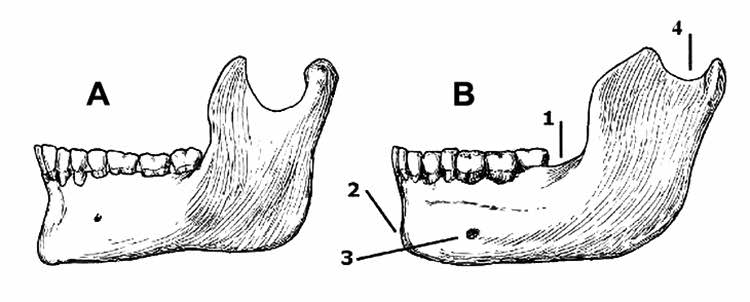
The lower jaw of a modern human (A) in comparison to the lower jaw of a Neanderthal (B) from the Amud Cave in Israel (after Tattersall 1995). The numbers indicate key features typical of Neanderthals: 1 — retromolar gap, i.e., an empty space between the last molar tooth and the ascending branch of the jaw; 2 — weak development, or more often, complete absence of the chin prominence (in the Amud jaw, it is better expressed than in the vast majority of other Neanderthal jaws); 3 — the mental foramen is not located below the premolar teeth, as in modern humans, but below the first molar tooth; 4 — the notch at the upper end of the ascending branch is shallow and asymmetrical, and the condylar (rear) process of the branch is lower than the coronoid (front).
The nasal cavity had a specific projection to aid in warming the incoming air. The broad and protruding nasal aperture led to a wide but not flattened nose. Neanderthals exhibited prognathism, with forward-projecting teeth and a robust lower jaw that had minimal chin prominence in early types. A retro-molar gap, a space between the last tooth and the jaw branch, was present at the end of the lower jaw. Neanderthals often displayed taurodontism, a condition where molars become more voluminous due to an enlarged pulp cavity.
Anatomical features of the Neanderthals
Neanderthals were well adapted to life in a cold environment, having existed during the glacial period in areas with temperate climates. Early Neanderthals inhabiting Mediterranean regions lacked the robust features typical of the classic European form. Their legs were more straight and less massive, their brow ridges were less prominent, and their skulls were less elongated. Evidently, these features developed in later Neanderthals as an adaptation to the cold climate of the glacial period.
The body hair, with which Neanderthals are often depicted in popular literature, was apparently lost by our ancestors at least 1.5 million years ago, i.e., long before the appearance of Neanderthals. One of the reasons for this was probably the transition to active hunting in the hot African savannas, when hair became a hindrance to effective thermoregulation, as the Homo genus uses sweating for this and hair prevents it.
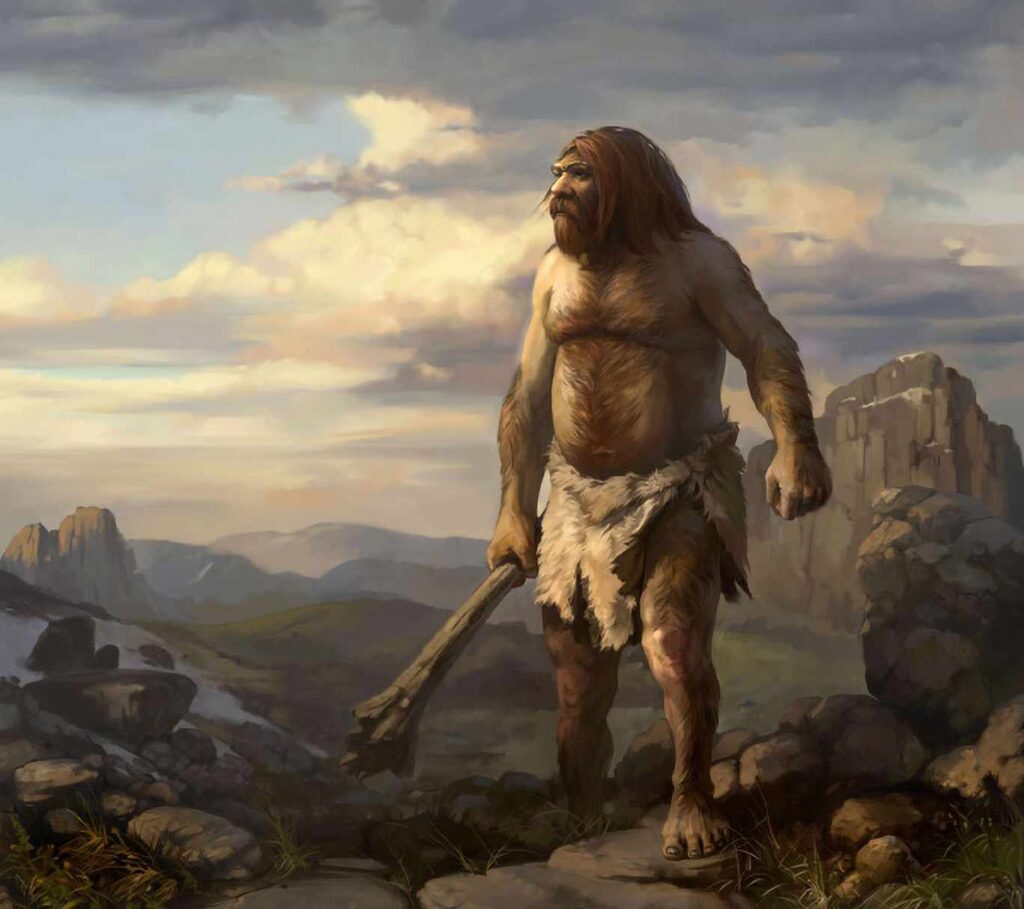
Homo neanderthalensis ©Kovalev
They were short people of massive build, with large, stocky bodies and powerfully short arms and legs. The neck is short and slightly bent forward. The clavicles are long, and the shoulders are wide. The barrel-shaped chest allowed Neanderthals to breathe deeper and had a larger capacity than that of Sapiens. The femur and radius bones are strong and noticeably curved, which indicates good muscular strength. Analysis of the upper limb structure shows clear signs of right-handedness in Neanderthals.


Left: This sculpture was made in 2012 by Adrie and Alfons Kennis from Kennis & Kennis Reconstructions and is based on an adult male Neanderthal skull (Spy 2) from Grotte de Spy in Belgium. Neanderthal Museum, Mettmann, near Dusseldorf, Germany. Photo: Don Hitchcock
Right: A reconstruction of a Neanderthal woman from the Saint Cesaire site in France. ©Elisabeth Daynes
The height of males ranged from 164 to 170 cm, with an average weight of 78 kg, while females had a height of 152 to 156 cm and an average weight of 65 kg.
Their need for food was higher than that of Cro-Magnons. Analyses of bone tissues confirm that Neanderthals ate mostly meat, but they also consumed other products of plant origin such as berries, grains, root vegetables, fruits, acorns, and nuts. Additionally, where available, they included marine resources in their diet, such as turtles, fish, dolphins, and mollusks.
Stone tools and other skills of Neanderthal man
Similar to Homo heidelbergensis, Neanderthals used their teeth to hold objects while working with tools. They began to form human societies based on the collective hunting of large animals, including bison and mammoths. Their culture and stone tool inventory largely belonged to the Middle Paleolithic (Mousterian) type (Mode III), which had regional variations. The earliest Mousterian stone tool culture dates back to 300,000 years ago. Late Mousterian artifacts have been found in Gorham’s Cave in Gibraltar. Neanderthals are also associated with the Micoquian industry and possibly the Châtelperronian and Uluzzian industries. Micoquian tools have also been discovered in the Altai region, specifically in Chagyrskaya Cave and Okladnikov Cave.

Drawings of stone tools belonging to the Middle Paleolithic (also called “Mousterian”) industries, found from Europe and the Near East to Africa between approximately 250,000 and 30,000 years ago. It is associated with archaic Homo sapiens, Neanderthals, and anatomically modern humans. Depicted here are points and scrapers. ©Adrien and Gabriel de Mortillet
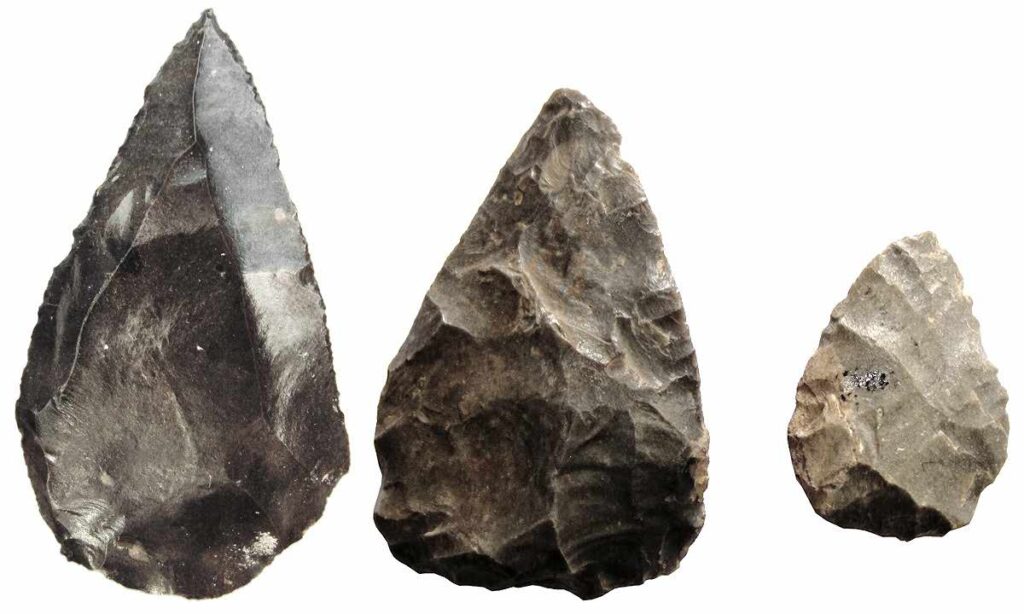
Mousterian Stone Tools ©Bradshaw Foundation
Neanderthals crafted stone choppers, axes, scrapers, and wooden spears, both for thrusting (e.g., the Schöningen site in Germany) and throwing, as well as bone tools. The quality of tool craftsmanship indicates that Neanderthals were capable of learning and possessed long-term procedural memory. However, throughout one and a half hundred thousand years, Mousterian tool-making technologies saw little change. It was only in the last millennia before their disappearance that progress became noticeable. Interactions with more advanced Cro-Magnons might explain this. Researchers have yet to discover any evidence indicating the use of spear throwers or bows.


The Neanderthals were excellent hunters and gatherers. Their prey included not only large herbivores such as mammoths, woolly rhinoceroses, bison, musk oxen, and deer, but also smaller animals like rabbits. They had to contend with predators as well, including cave hyenas, lions, and bears. This way of life led to a high level of injuries and traumas among them.

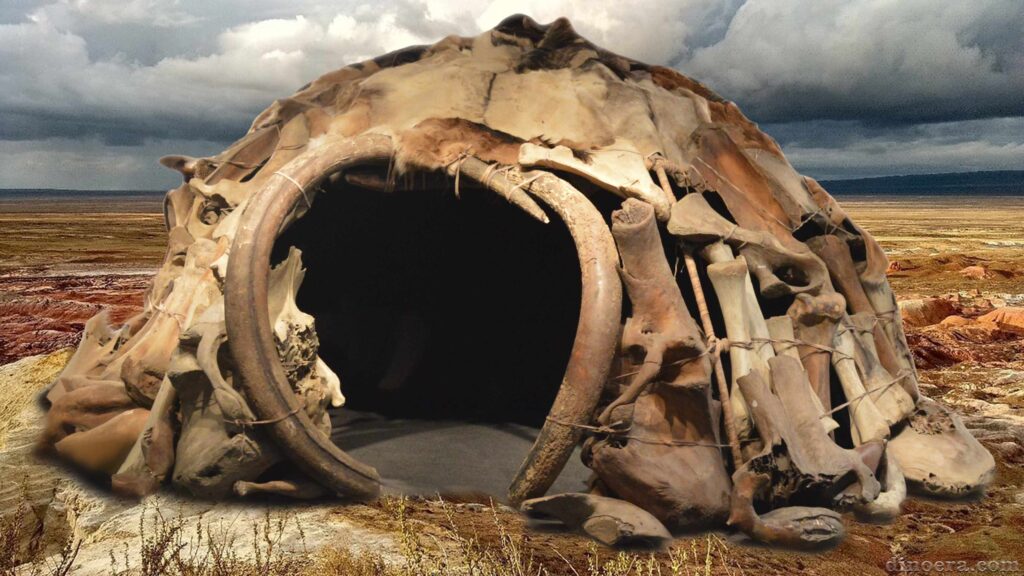
Mammoth House. This replica was made with real mammoth fossils (bones and tusks).
They were skilled at processing hides and setting pit traps in the ground. They were already adept at constructing technically complex dwellings made from stones and the bones of large animals. For instance, the Mousterian site is made from mammoth bones at Molodova I (Ukraine, Chernivtsi region). However, Neanderthals still led a nomadic hunter-gatherer lifestyle and did not establish long-term settlements. In areas without caves, camps were set up in the open air (Ein Qashish, Israel).
Neanderthals actively used fire. Hearths and fire pits are frequently found at their sites. Since they primarily inhabited regions with harsh climates and snowy winters, they undoubtedly used clothing. Bone needles and stone awls, found on Neanderthal sites, were used for sewing hides. In the Fontanet cave in France (Ariège), a late Paleolithic footprint of a human foot clad in something resembling a moccasin was discovered.
Social and cultural characteristics
They lived in small, isolated groups, which were smaller than those of modern hunter-gatherers. Hunting large animals required collective efforts and some level of organization. The hunting group needed to coordinate their actions and have a leader, necessitating a division of labor based on age and gender. Neanderthal communities had limited contact with their neighbors. Children grew rapidly, reaching sexual maturity as early as 13–15 years old, and the average lifespan was around 23 years. Only a few Neanderthals reached the age of 35.
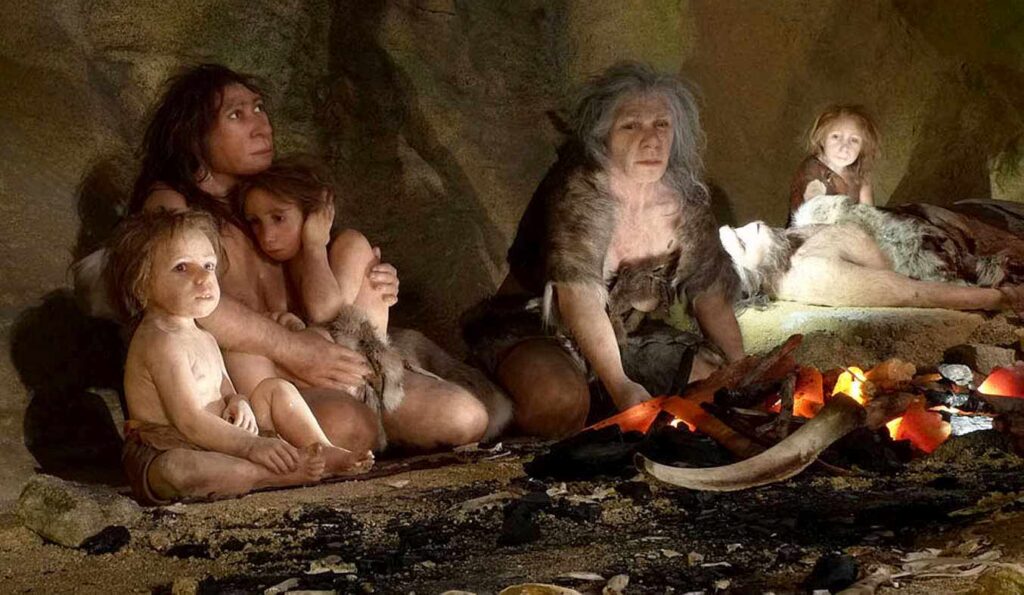
The life of Neanderthal hunters was difficult. Many bear evidence of healed bone fractures typical of modern rodeo rough riders. Here is a family group with the father lying on the floor, pale from loss of blood and mortally injured, while the remaining members of his family — his mate, mother, and children — contemplate their future without him.
This is the work of Elizabeth Daynes. Photograph: Nikola Solic/Reuters/Corbis
Their burials with grave offerings, dating back to 80,000 years ago (e.g., La Ferrassie, Shanidar), indicate the emergence of beliefs and provide evidence of a developed social life and a system of religious beliefs. In general, their burials are relatively simple, but they contain remnants of flowers, the bones of bison and buffalo, tools, and ocher. There is also evidence of the exchange of material culture between anatomically modern humans and Neanderthals (e.g., in Kostenki).
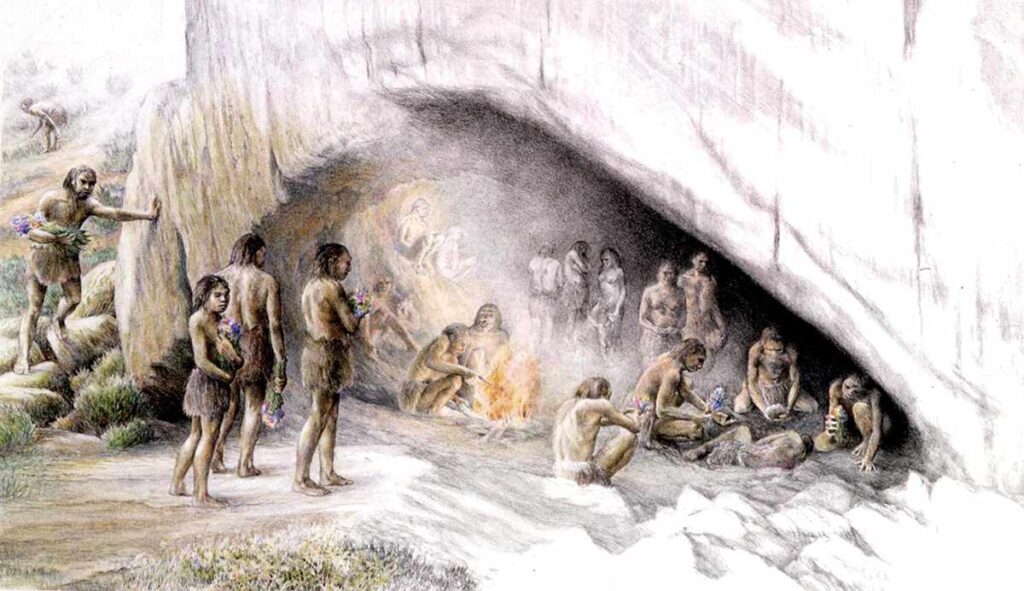
An artist’s impression of a Neanderthal burial at Shanidar Cave1 draws on the finds of Solecki and Barker to show a community gathering and laying flowers around the body of the deceased.
However, they frequently engaged in cannibalism, as indicated by the findings of skeletons with marks from flint tools, such as in Krapina Cave (Croatia), Grotte de l’Hortus (France), Goyet (Namur, Belgium), and El Sidrón (Spain).

Neanderthal flute from Divje Babe Cave

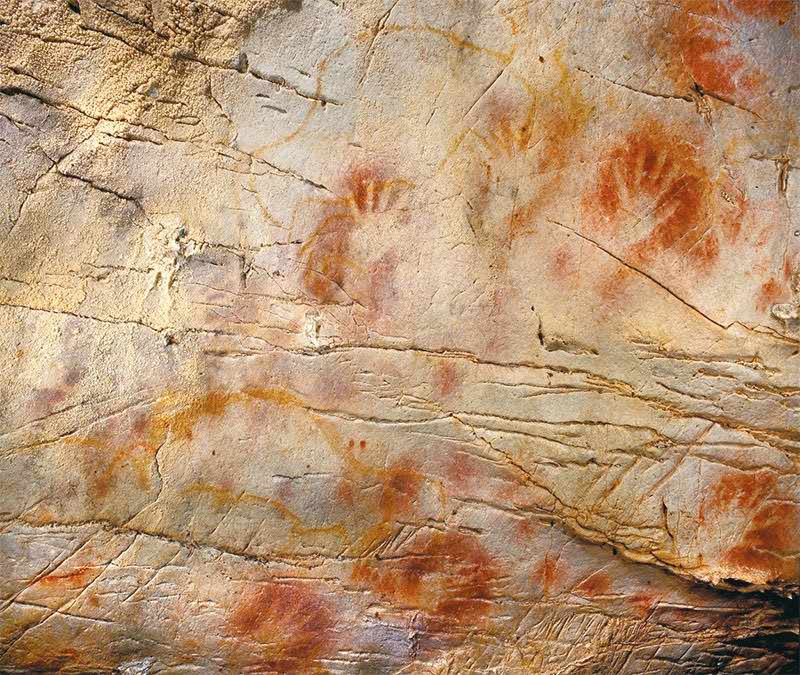
Left: This is the first abstract design found that could not have been made by modern humans. Gorham’s Cave, Gibraltar. Photograph by Kenneth Garrett, National Geographic
Right: Examples of early symbolic behavior: palm prints at El Castillo (Spain, over 40,000 years ago).
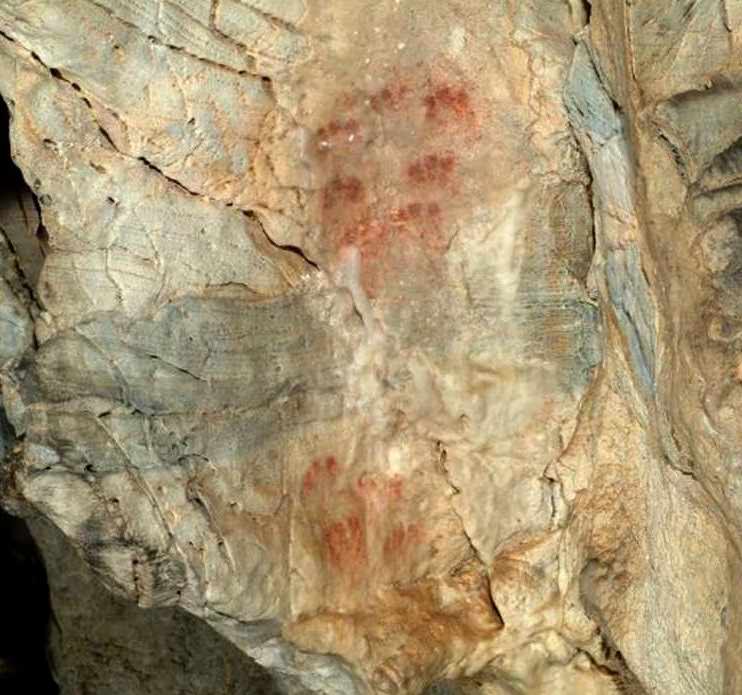

Left: Traces most likely left by Neanderthals on the walls of the Ardales cave. Red marks made with fingertips. CADENA SER
Right: One of the drawings found in La Pasiega, one of the ancient caves. View of the wall and modern rendering. The abstract design has a geometric shape similar to a rectangle. The scalariform (ladder shape), composed of red horizontal and vertical lines, is older than 64,000 years and was made by Neanderthals. Image: Breuil et al.
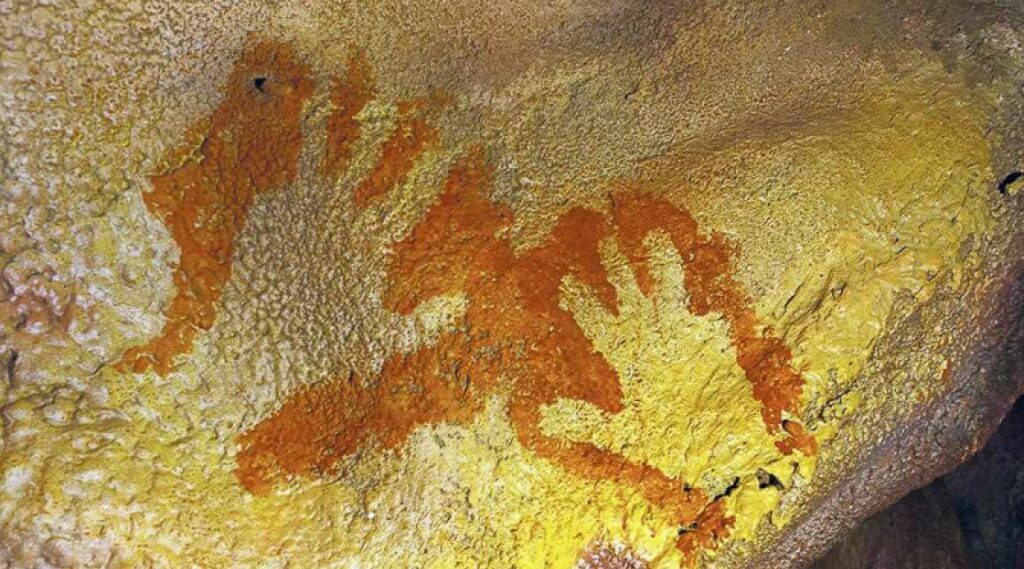
Cave paintings from the Maltravieso cave (Cueva de Maltravieso)
Animistic beliefs gave rise to cults involving bear skulls (Drachenhöhle Cave) and bison skulls (Ilskaya Site). A flute made from the hollow bone of a bear’s femur bone, discovered alongside Neanderthal remains dating back 67,000–43,000 years in Western Slovenia (Divje Babe Cave), may correspond to seven notes of the diatonic scale of modern music. Some cave drawings of lines (Gorham’s Cave, Gibraltar) and other symbols, as well as carvings on animal bones, align with the time of Neanderthal habitation. Images of figures and lines have been found in Spanish caves such as La Pasiega, Maltravieso, Castilio, and Cueva de Ardales. Neanderthals created these drawings, demonstrating symbolic behavior, as they are about 60 thousand years old.

Cueva de los Aviones (Cartagena, Spain). Perforated shells from Mousterian level II. Remains of red pigment (hematite) were found adhering to the inner side of No. 3. After Zilhao et al. (2010a).

La Ferrassie (Les Eyzies, France). Left, an engraved bone found with the adult skeleton in burial 1. Right, the lower face, decorated with cup holes, of the stone slab that covered the burial pit of individual 6, a 3 to 5-year-old child. After Peyrony (1934).

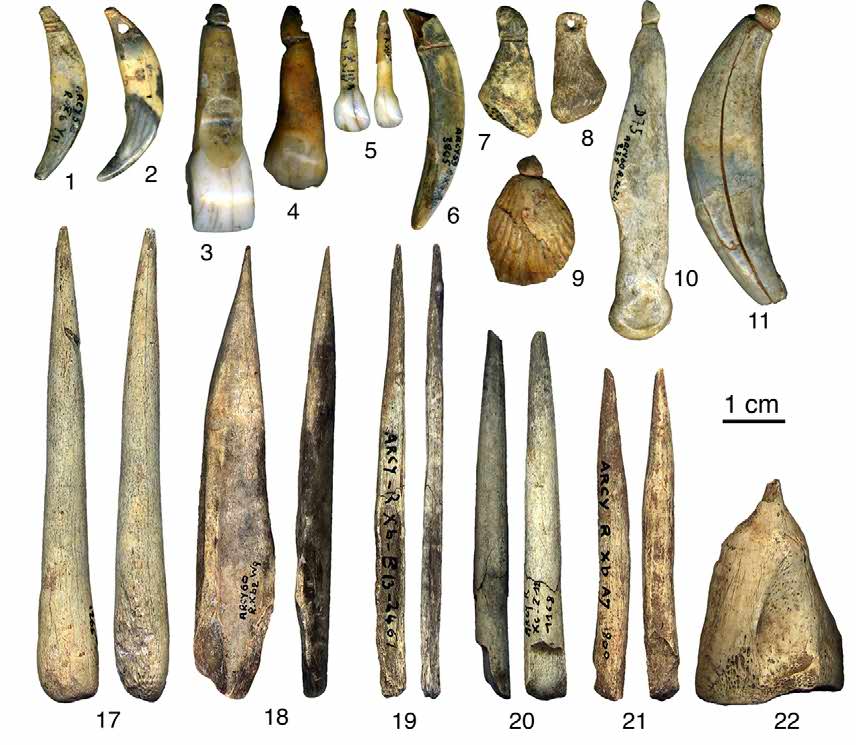
Left: The ornamental use of perforated Pecten shells in the Middle Paleolithic of the Mula basin (Murcia, Spain). Pecten maximus from Mousterian level I-k of Cueva Anton (Zilhao et al., 2010a). The external side is painted. The natural red color had been lost due to bleaching. The symbolic significance of such shells, collected from the seaside >60 km away, is uncontroversial when found in modern human associated Upper Paleolithic contexts, and there is no reason to think otherwise when they are found in the Neandertal-associated Middle Paleolithic.
Right: Grotte du Renne (Arcy-sur-Cure, France). Chatelperronian symbolic artefacts. Personal ornaments made of perforated and grooved teeth (1–6, 11), bones (7–8, 10) and a fossil (9); bone awls (17–22). After Caron et al. (2011)
Neanderthal man was able to create objects with symbolic or decorative purposes. These included bone pendants with traces of paint (La Quina and some Châtelperronian sites), items made from bone and stone with rows of incisions (La Ferrassie, Bacho Kiro), limestone plaques with carved recesses painted with ocher (Le Moustier), necklaces made from perforated animal teeth and claws, and more. Examples of actual drawings include a depiction of a leopard on a bison bone from the Pronyatyn site (Ukraine, Podolia) and a less distinct figure of a deer or elk on a mammoth shoulder blade from the Molodova I site (Ukraine, Bukovina).
Neanderthals cared for disabled fellow members and the elderly. Well-healed bone fractures indicate concern for the injured and evidence of rudimentary medical practices, such as wound care, splinting fractures, and the use of medicinal plants. Discoveries in the Shanidar Cave in Iraq and La Chapelle-aux-Saints in France provide insights into these practices.
Genetic studies suggest a patrilocal organization of Neanderthal tribes, where males remained within the tribe and females moved to the husband’s tribe. Additionally, evidence indicates the occurrence of close-knit marriages within the tribe.
The Extinction of Neanderthals
Neanderthals evolved into a highly specialized human species. They adapted exceptionally well to specific conditions in cold climates, but this specialization reduced their overall adaptability. Since the peak of the last ice age occurred 26,000 years ago, the hypothesis of Neanderthal extinction due to climate warming is not supported; the climate remained very cold and even became colder during their extinction.
Invading Central and Western Europe around 48–43 thousand years ago, the Cro-Magnons advanced along the Mediterranean coast and the Danube Valley. Modern humans gradually displaced Neanderthals, competing with them for food and other resources. The collision of people with advanced technology with those with less developed technology also played a role.
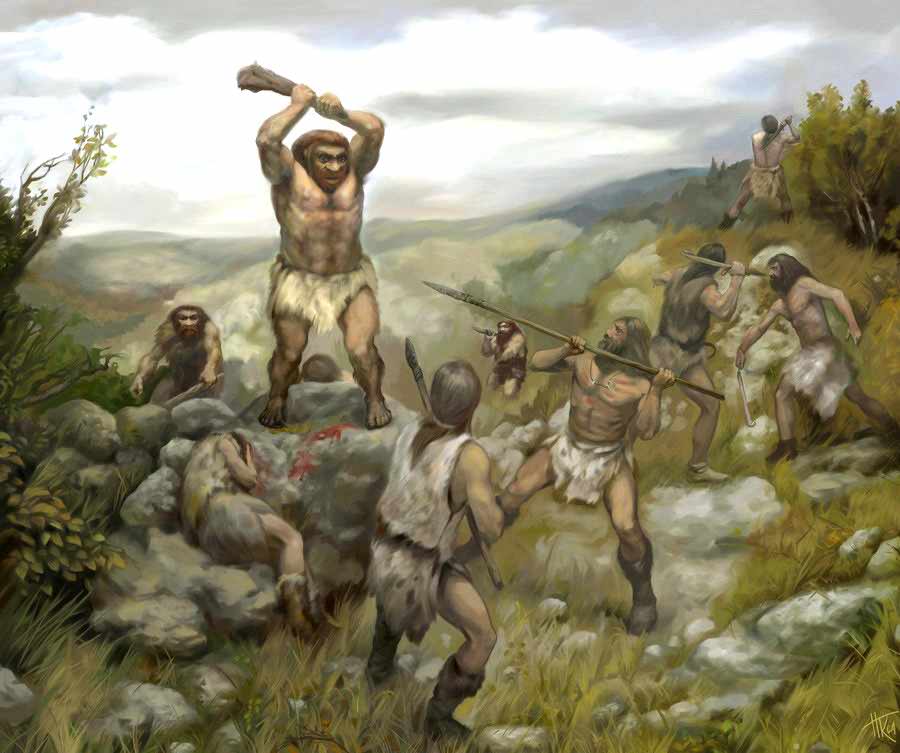
Battle of Neanderthals and Cro-Magnons ©Kovalev
The practical absence of genetic mixing during this period suggests that Neanderthals were not assimilated but were partially exterminated by Cro-Magnons and partly displaced from their habitats to remote and mountainous regions, where they gradually became extinct. The low population of Homo neanderthalensis made them vulnerable to any environmental changes.
In the final stage of their existence (45–40 thousand years ago), Neanderthals already exhibited low genetic diversity. They engaged in intergroup violence, actively practicing cannibalism. Various factors contributed to their extinction, ultimately succumbing to the pressure of Homo sapiens.
The extinction of Neanderthals in Europe occurred around 42–40 thousand years ago. The last traces of Neanderthals are documented on the Iberian Peninsula (Gibraltar) and in the Mezmaiskaya Cave in the Caucasus during the Würm glaciation, where they persisted for a couple of thousand years, while they had already become extinct in the rest of Europe.
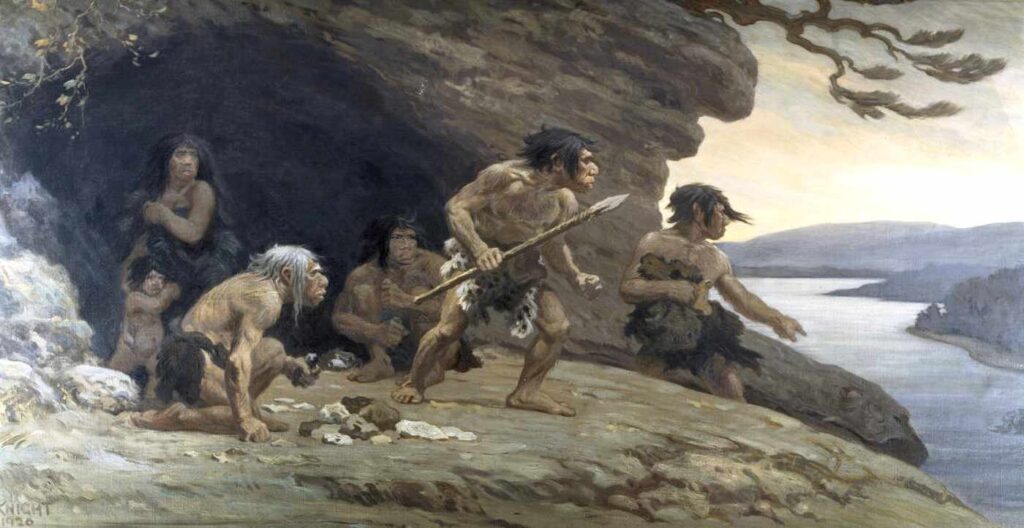
Neanderthal man from the Mousterian era ©Charles R. Knight 1920
Varieties of Neanderthals
There is a whole range of variations among fossil Neanderthals. Based on certain morphological features, they can be conditionally divided into several groups:

Neanderthal man ©Erich Ferdinand
a) Early, archaic, or atypical Neanderthals, 430–130 thousand years ago, early Paleolithic. Some of them belong to the early atypical “Ehringsdorf” group.
According to some anatomical data, early European Neanderthals were closer to sapiens than the later classic Neanderthals. This is explained by the fact that originating from a common ancestor around 700,000 years ago, Neanderthals and the ancestors of modern humans gradually adapted to opposite living conditions and acquired various, quite dissimilar traits. As a result, the shared characteristics diminished over time. Therefore, early Neanderthals in Europe, being closer to the common ancestor, had more anatomical features in common with it.
Examples: Sima de los Huesos, Gruta da Aroeira, Pradayrol, Ponte Mammolo, Casal de’Pazzi, Saccopastore, Pontnewydd, Ehringsdorf, Bau de l’Aubesier, Apidima, Lazaret, Ganovce.
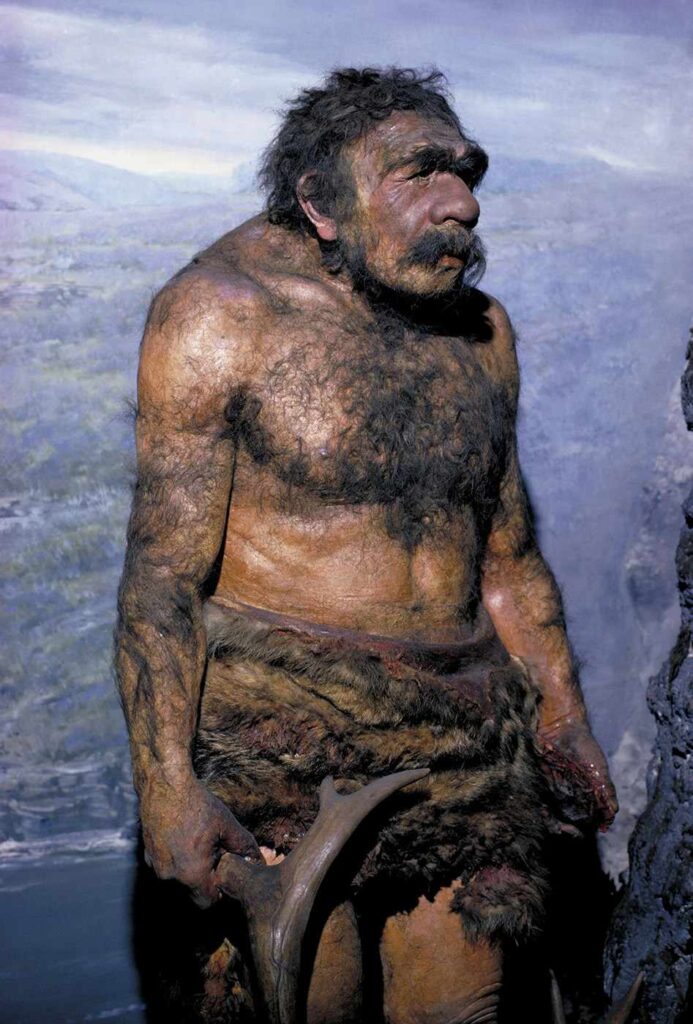
Homo neanderthalensis ©Tom McHugh-The Field Museum
b) Classical Neanderthals (the so-called “Chapel” and “Spy” groups): late Pleistocene; Middle Paleolithic (Middle Stone Age)—transition to the Late Paleolithic; 200–50 thousand years ago.
Classical Neanderthals acquired anatomical features that set them apart from modern humans. They followed a different evolutionary path, adapting to the harsh conditions of the glacial epoch in Europe. Unlike early Neanderthals from the Mediterranean and the Near East, the classical type exhibited prominent brow ridges, a broad nose, a massive skeleton, and a significantly large brain. The tools associated with them generally belong to the Mousterian culture. They had a sturdy, powerful build, with a height ranging from 155 to 168 cm.
Classical Neanderthals reached their peak during the last glaciation, being highly specialized and well-adapted to cold climates. This species thrived and was fully developed around 130 thousand years ago, surviving several glacial epochs and interglacials. Numerous skeletons and archaeological sites have been discovered. Their habitat extended far beyond Europe, ranging from Northern Germany in the north to Israel, Italy, and Spain in the south, and from England and Portugal in the west to Uzbekistan and the Altai region in Asia.
Examples: La Chapelle-aux-Saints, La Moustier, La Quina, La Ferrassie, Abri Suard, Ochtendung, Bourgeois-Delaunay, Pinar–Carihuela, Nesher Ramla, Malarnaud, Krapina, La Naulette, Subalyuk, Šala, Fate, Barakaevskaya.
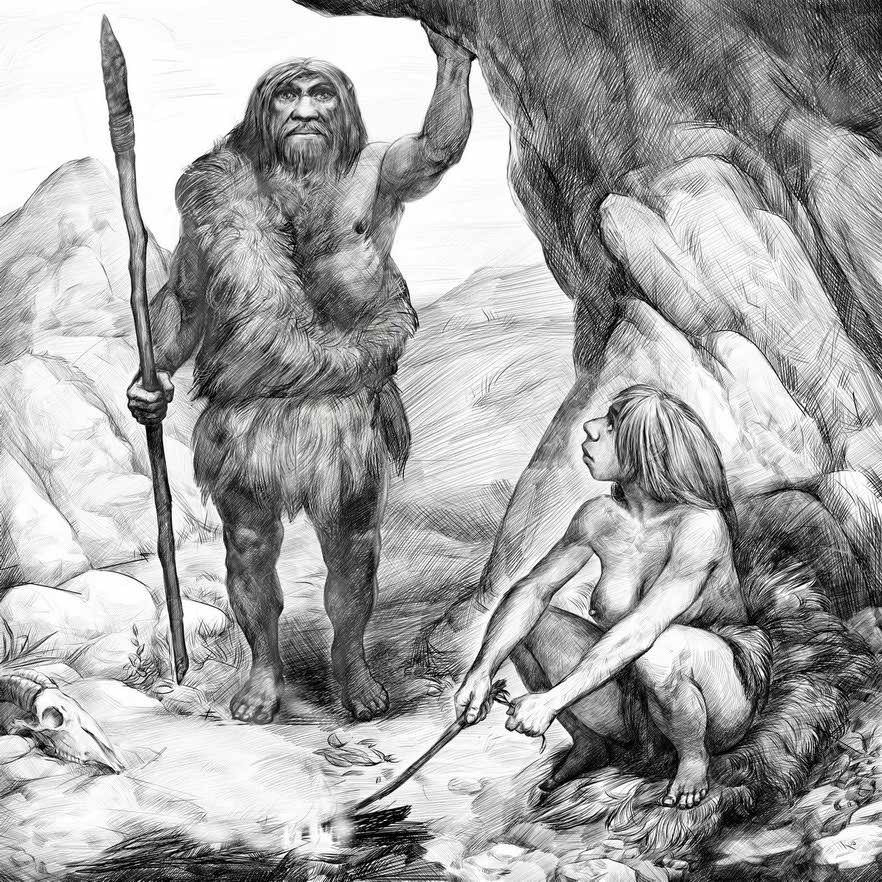
Homo neanderthalensis ©Kovalev
c) Late, gracile, Mediterranean Neanderthals (l’Hortus group) emerged during the early Late Paleolithic around 50–40 thousand years ago. They demonstrate some developments toward modern humans: a reduction in the size of front teeth (microdontia), a decrease in nose size, increased central and decreased lateral height of the brow ridge, more developed frontal lobes of the brain, and a more pronounced chin. Simultaneously, Mediterranean Neanderthals retained more ancestral traits inherited from Homo heidelbergensis (including relative gracility) and existed in southern regions with a relatively mild climate.
Climatic conditions did not solely determine the morphological features of Neanderthal man. Classical variants were consistently observed in northwest Europe during periods of lower temperatures. However, a significant mixing of classical and progressive population types is noted in both cold and warm paleoclimates. Morphological characteristics of classical and progressive types manifest almost simultaneously in the same region amid similar temperature phenomena. Additionally, inhabitants of the Middle East (Tabun, Skhul) show less pronounced classical features.
Examples: Hortus, Roc de Marsal, Vindija, Cova Simanya.
Genetic Varieties of Neanderthal man
Unlike morphological characteristics, molecular genetics data show a more complex picture, indicating various waves of Neanderthal dispersal in Europe and Eurasia. Three geographical groups can be distinguished: Western and Eastern Europe; the Mediterranean coast; and the Caucasus territory and eastward.
* * *

Such is the difficult story of the life and death of Neanderthal man, who inhabited Europe for hundreds of thousands of years. He traversed his way to the end, fading away from the face of the Earth forever.
Synonyms: Palaeoanthropus, Protanthropus, Acanthropus, Homo mousteriensis, Homo primigenius.
- Some researchers dispute the ritual burial at Shanidar, explaining the presence of pollen in the grave by suggesting that rodents could have burrowed and carried pollen into the burial. However, in the burial, not only pollen but also anthers — aggregates of pollen grains — were found. These could have entered the grave only as part of the flowers. Then it will have to be assumed that the flowers were laid on the Neanderthal’s grave by rodents, not his fellow tribesmen. ↩︎












